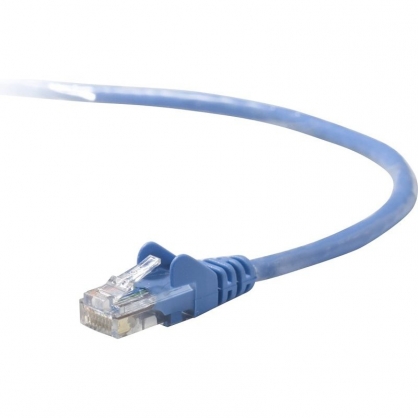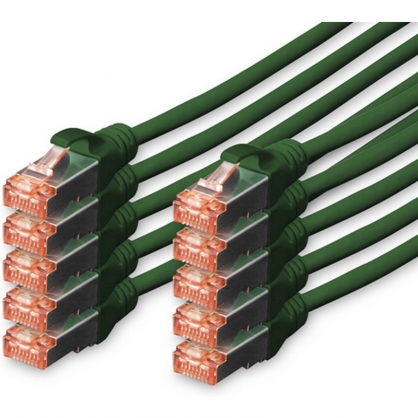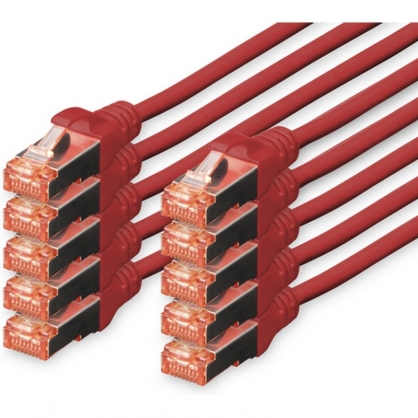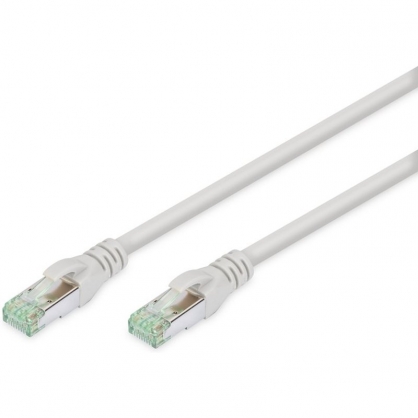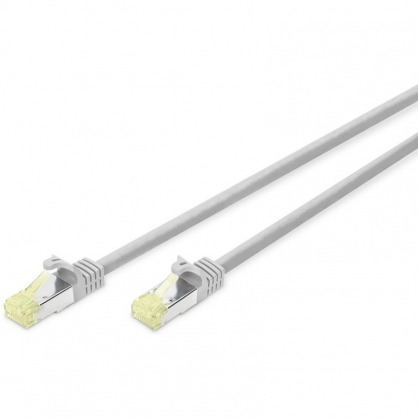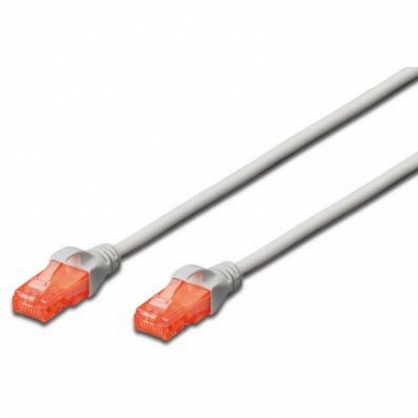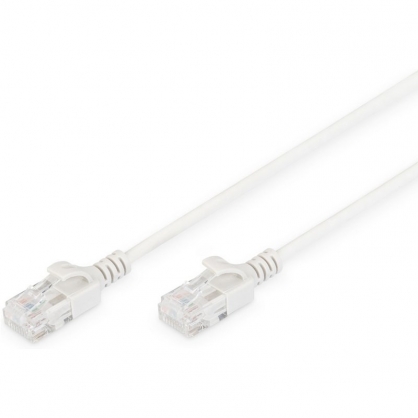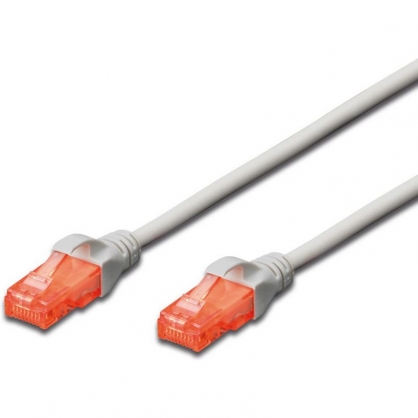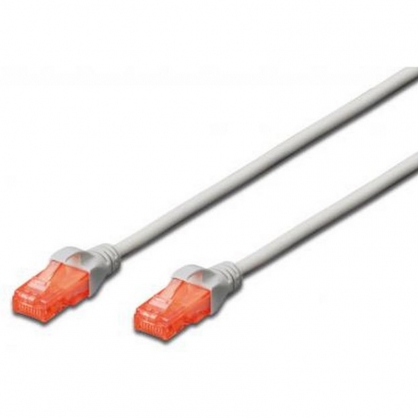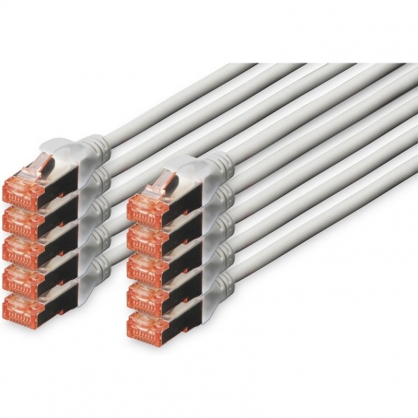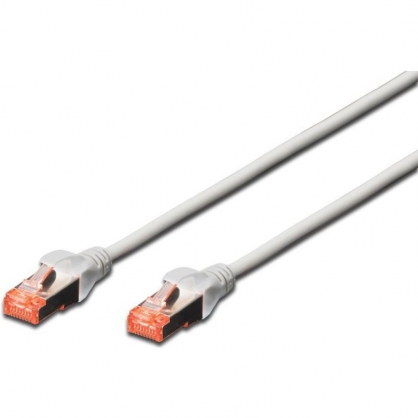- Cablesx
- Ethernet cables
- HDMI Cables
- KVM Switches and Cables
- DisplayPort Cables
- Fiber-Optic Cables
- Belkin
- Digitus
- Hama
- Startech
- TP-Link
- Ubiquiti-networks
How to choose the best Ethernet patch cable?
Ethernet cables are a must if we want to have a good internet connection, enjoy a good browsing experience, access content quickly, work and transfer files immediately, enjoy online entertainment, etc.
Therefore, beyond looking for the best offer on the internet, it is important to choose the best ethernet cable to make the most of our connection
What is an ethernet cable?
This type of internet connection via Ethernet or RJ45 cables is currently the one with the most stable performance, although its efficiency depends, to a large extent, on the type of ethernet cable chosen.
So...
What is the best type of ethernet cable?
Like any other technology, Ethernet cables are classified into several types or categories. These categories have slight differences that mainly have to do with the speed at which data passes through the cable. Here are some of the most popular Ethernet cable categories today.
What do the categories of Ethernet cables mean?
The first thing we should know is that there are different categories of Ethernet cables and that each of these categories directly determines the speed at which the ethernet cable transmits data. The correct choice of Ethernet cable category is essential, especially at times like these, when many operators have launched new connection speeds on the market, which we can only take advantage of if the cable we use is capable of supporting them.
ADSL connections offer lower speeds so their requirements in this regard are lower, but the new fiber connections do require a minimum that operators place from category 6 onwards.
What are the Ethernet cable categories?
- CAT5: CAT5 is one of the original categories of Ethernet cables. CAT5 cables process and transfer information at a speed of 100 megabits per second.
- CAT6: CAT6 cables transfer information at up to 10 gigabits per second, significantly faster than CAT5 or CAT5e cables. However, they are known to be a bit stiffer, which can be a challenge if you have to pull them through walls or around corners. Its specifications are 1 GB up to 100 meters and 250 MHz.
- CAT7: CAT7 cables are intended for long distances. They are not necessarily cables that would be used to go from the TV to the router a few meters away, but ones that offer 10 gigabits per second speed over distances of up to 100 meters. They are also considered shielded, which means that there is almost no chance of electrical interference with them if they are properly terminated in shielded connectors.
- CAT8: CAT8 is the newest and most highly rated cable category. CAT8 cables are intended for data centers or enterprises that have a large number of devices that need to be connected. They are some of the fastest cables that provide the most bandwidth. Get a whopping 40 GB and 2000MHz at distances up to 100 feet with these cables.
Basic chart of Ethernet cable categories
| CATEGORY | SPEED | FREQUENCY | DOWNLOAD SPEED |
|---|---|---|---|
| ETHERNET CAT5 | 100 Mbps | 100 MHz | 15,5 MB/s |
| ETHERNET CAT5E | 1.000 Mbps | 100 MHz | 150,5 MB/s |
| ETHERNET CAT6 | 1.000 Mbps | 250 MHz | 150,5 MB/s |
| ETHERNET CAT6A | 10.000 Mbps | 500 MHz | 1.250 MB/s or 1,25 GB/s |
| ETHERNET CAT7 | 10.000 Mbps | 600 MHz | 1,25 GB/s |
| ETHERNET CAT7A | 10.000 Mbps | 1.000 MHz | 1,25 GB/s |
| ETHERNET CAT8 | 40.000 Mbps | 2.000 MHz | 5 GB/s |
Frequency and power
The distance between the computer and the router is another factor to consider when choosing a ethernet cable. The longer the distance, the longer the cable will be, which will reduce our connection speed if it is not adequate. To know which one to choose, we must look at its frequency, the variant that defines the power of the network. The higher the frequency, the more efficient the transmission will be and the less it will be distorted, even if the length of the Ethernet cable increases.
And if the category and frequency are important for choosing the best ethernet cable, so are its materials and type of manufacture: the thickness of the wires, braiding and protective sheaths.
Shielding
The best Ethernet cables are composed of copper wires twisted in pairs. The higher the cable category, the greater and more frequent the twisting. And the more frequent the twisting, the better the connection and the less interference from long distances or environments with electromagnetic noise.
In addition, ethernet cables may or may not come “shielded” to protect their wires. The shielding is a metallic coating whose presence and type also determines the category of the Ethernet cable, its speed, and its capacity to provide sufficient stability to our connection.
What types of twisted pairs are there?
- UTP (Unshielded twisted pair): Does not include any shielding.
- FTP (Foiled twisted pair): It has a shield between the sheath and the twisted pairs of wires.
- STP (Shielded twisted pair): Each twisted pair is individually shielded.
- SFTP (Shielded and foiled twisted pair): It has a shield between the sheath and the cables and, in addition, each twisted pair of wires is individually shielded.
What is the best Ethernet cable for me?
Now that you know which elements are key in an Ethernet cable to get the most out of your connection, check which cable you are using (you will find the category printed on the cable sheath), perform an Internet speed test and see how you can improve your connection with any of the cables in the selection we have prepared.





